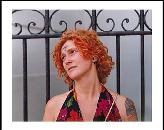Minnesota Whitney
Four artists with Minnesota associations (that is, live here or used to live here) are in the current Whitney Biennial: Santiago Cucullu, Rob Fischer, Alec Soth, and Bill Siegel.

Four artists from Minnesota are currently represented in the Whitney Biennial, arguably the most important show in the country for artists arriving on the world stage. What follows is a series of brief quotes from the Whitney catalogue essays on these artists. (See the link below to see the show on line and to access the full versions of these essays.)
More coverage of the show will follow: a couple of reviews, a collection of the local Whitney artists’ work as well as that of other Minnesota artists whose arena is national, and an article by Douglas Fogle of the Walker on his experience of the show.
We’ll be thinking, in some of this future coverage, about what characteristics distinguish art from a place and art whose place is the artworld: Are there differences? If so, what are they? Are they unique to this place or common to other regional arts? This is an extension of the earlier interest, in the articles and the forums on this site, in what makes Minnesota art what it is, and how it can be of interest and relevance to the larger artworld.
Santiago Cucullu, artist
“A native of Argentina now living in Milwaukee, Santiago Cucullu creates large wall drawings, watercolors, and sculptures that depict hybrid tales culled from historical events and personal recollections. The mural-sized drawings, made from hand-cut contact paper pressed directly against the gallery wall, often center on a minor historical event or figure from Latin American or Spanish political movements. These times, places, and figures are then conflated with people and events recollected from Cucullu’s own life to create composite visual storyboards. . . Cucullu’s sculptures inquisitively recreate some of the physical structures that represent the power structures against which his chosen revolutionaries fought. They probe the psychological effects of street barricades and other impediments to free movement, trading in the tires, sandbags, wood and overturned cars for lighter materials such as items from a party supply store and empty cardboard boxes. With his brightly colored visual language the artist matches the buoyant utopian aspirations of past revolutionaries. In retelling their tales, Cucullu encourages the viewer to do the same.”
–Brian J. Sholis
Rob Fischer, sculptor
“Rob Fischer’s sculptures balance mobility and the desire for escape with an inextricable bond to place. . . . Mirrored House on Floats . . . , a mirror-sided structure with a pitched roof set on overturned oil drums, suggests the ice-fishing huts of the artist’s native Minnesota. The sculpture brings to mind twin American vernaculars: its construction refers to the folk architecture of the Great Plains landscape, while its elegant formality [evokes]1960s American modernist sculpture . . .Fischer’s constructions are made entirely by hand, often reusing or recycling elements from earlier pieces, and the history of each scrap or spare part is embedded within the works. Their pathetic strivings toward mobility suggest a desire to shake off the burden of place . . . Fischer’s unsettling, enigmatic sculptures look toward a future laden with the aura of his materials’ past lives and the places from which they have come.”
–Brian J. Sholis
Alec Soth, photographer
“Evolving from a series of road trips along the Mississippi River that took place over a period of several years, Alec Soth’s series Sleeping by the Mississippi captures an array of individuals, landscapes, and domestic settings that elicit feelings of isolation, longing, reverie, and a sense of eccentricity specific to the United States. . . . The link between [the photos] is lyrical, reflecting an inspiration rooted in poetry. During the course of the project, Soth revisited the poems of Walt Whitman, James Wright, and John Berryman. . . . Soth says he is naturally attracted to people and places that embody a quiet sensibility. This is reflected in his choice of an 8 x 10 view camera . . . the slow process [of] using this camera lends itself to the stillness and poetic quietude of his pictures . . . . This particular camera work requires complicit subjects, making evident the sense of trust that Soth establishes with his subjects.”
–Asara Diquinzio
Bill Siegel and Sam Green, film, The Weather Underground
“Chronicling an episode of past activism and resistance, The Weather Underground highlights the extent of turmoil enveloping the country in the late 1960s, a time often perceived as hopeful and idealistic. Documentarians Green and Siegel began working on the project five years ago, but the terrorist attacks of September 11, 2001, and subsequent events have added a new poignancy. . . . the film invites comparison between the early 1970s and the present day, a time when Americans are living though collective trauma and anxiety at home, and the United States is involved in the prolonged aftermath of war abroad.”
–Henriette Huldisch